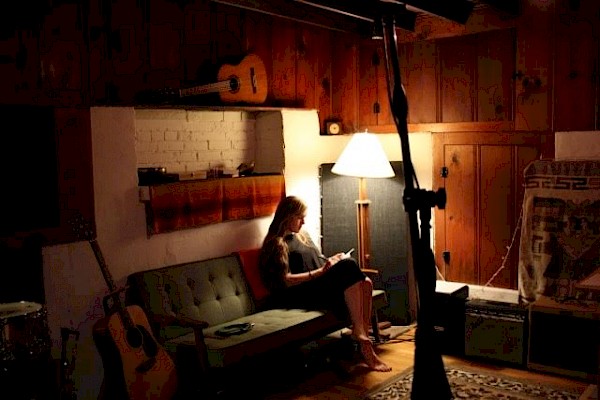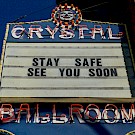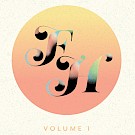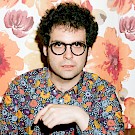 Abbey Hendrix at producer Adam Brock's L.A. carriage house and studioWhen it comes to the multiple voices of Abbey Hendrix, it helps knowing that there were a few Abbeys along the way. As Abbey Hickman, Hendrix sang and played keys in the band Old Wave, performed with Moorea Masa, and released her debut EP Abbey Rose, describing herself as “a ‘70s folk singer throwback edged in jazz, world and indie fusion.”
Abbey Hendrix at producer Adam Brock's L.A. carriage house and studioWhen it comes to the multiple voices of Abbey Hendrix, it helps knowing that there were a few Abbeys along the way. As Abbey Hickman, Hendrix sang and played keys in the band Old Wave, performed with Moorea Masa, and released her debut EP Abbey Rose, describing herself as “a ‘70s folk singer throwback edged in jazz, world and indie fusion.”
Then there’s the Abbey who went to school for opera and earned a bachelor of music in film scoring from Berklee. This Abbey creates commercial work for film and advertising and wears the multiple hats of music supervisor, producer and musician as a senior producer for Walker, working with the likes of Wieden+Kennedy. But the Abbey on You, Sir, her debut full-length release, has fully incorporated her training, applied her versatile vocals, and turned her discerning ear and songwriting talent towards her own personal music.
“For a while before we recorded this album, I was caught up in thinking, ‘What is my sound?’ and then I realized that my sound is just my voice and my songwriting and I shouldn’t be afraid to work in different styles or genres because that’s what makes my writing special.”
The name Abbey means “father's joy” and Hendrix opens the title track with an acknowledgement in lyrical form: “I'm my father's daughter, I'm the one he wrote, ‘Gotta keep it moving, if you wanna buy that boat.’” In popular culture, the phrase “You, sir” is a polite and formal salutation that occasionally ends in insult. (See: “You, sir, are an idiot.”) But here, it’s used to elevate the conversation.
“Basically, I grew up in a very privileged community in Houston with a lot of oil money and private schools,” Hendrix explains. “Now, I work in advertising which can kind of feel like a glamorous world. 'You, Sir' is speaking to areas of my life where I’ve felt like I’m better or felt expectations of having wealth or this wonderful life. But then there’s also this guilt, like, ‘What should I do with that?’ and ‘Who should I be based on these experiences I’ve had?’ Because I’ve also been in a band and not had any money. There’s all these different lives and it’s about deciding which one I want for myself. It’s not really about a certain person, it’s about looking at these different facets of ‘me’ and deciding which one I really am.”
Similarly, You, Sir is a celebration of Hendrix’s wide range of musical proficiencies and partnerships. Hendrix recorded the album and shot the title track’s music video with a host of talented people in Los Angeles, New York and Portland over the past year. The album was mixed by David Pollock at Fortress Galaxy in Portland and mastered by Timothy Stollenwerk at Stereophonic Mastering. It also includes local composer and flutist Barra Brown (Shook Twins, Alameda, Morning Ritual, Korgy & Bass, PJCE Records).
Most notably, Hendrix enlisted the multi-instrumental, production and engineering work of former Old Wave bandmate and friend Adam Brock, whose recent accomplishments include a song he wrote for (and a brief appearance in) Greta Gerwig's award-winning film Lady Bird. The film scoring gifts that Brock and Hendrix have in common found their way into the recording process and subsequent visuals for the video.
“I wanted the tone of the song to be both confident and empowering and playful and childlike. When Adam and I were recording ‘You,Sir,’ in order to get the right vibe from the vocal takes, I was doing karate moves to inspire and engage the right muscles. We thought, ‘What if we paired this innocence of these kids wanting to feel powerful and strong with these movements that create confidence?’”
The result is a video directed, edited and animated by Evan Gütt featuring Grand Master Bettencourt and his young students at Bettencourt's Taekwon-Do Hapkido of Oregon City.
The song’s very stripped-down groove is simplistic but strong, a sort of tempered marching band warm up, accented only by piano and strings and gently layered harmonies. “The percussion is literally made from the light that hangs from Adam’s carriage house in L.A.,” Hendrix confesses—a carriage house that, as it turns out, belonged to one of the original animators at Disney (at a time when Disney was innovating symphony orchestra animated film scores), with Brock assuming the lease from a musician who had lived there for 30 years afterwards.
“It’s a special place. The studio is full of wood and open. A lot of the sounds we got for the album and inspirations for the arrangements came from that space.”
Other subtle and magical touches on the album appear not only as a product of the location, such as the cacophony of birdsong on several song intros and outros, but by the chance meeting of Joy Pearson of Lenore. while performing together at the White Eagle.
“Joy is this badass mom in the Portland music industry who is able to juggle that all so beautifully,” Hendrix says. “I was immediately drawn to her voice and humility, realness and stage presence.”
Afterwards, they met again at a Dry Run brunch where creatives try out new music and writing. Pearson pulled Hendrix aside and said, “Abbey, I had a dream last night that you have music you have been sitting on that you need to get out there. You need to make it. Is that true?”
Five years went by. Hendrix thought about that conversation often but didn’t make plans to record her own music until Brock said, “Abbey, if you want to do this, I’m here for you, I’ll take a week off of work.” Hendrix flew out to L.A. and they recorded eight songs in seven days. “It was him and I in this 500-square-foot space for a week, not leaving this mountain in L.A., all hours either sleeping or recording.”
“If Joy and Adam hadn’t been the ones to support me and push and expect that of me, it never would’ve happened,” she adds.
You, Sir opens with a tender and twinkling piano waltz of a song called “Enough.” Hendrix’s voice lilts here and there like Mozart's starling, while on others, you hear the strong jazz-influenced folk of Joni Mitchell (in the style of Court and Spark and Blue). Vocals soar and stack into choral symphonies and dissolve into classical compositions with jazz sensibilities—there are some decidedly expressive and cinematic soundscapes in this collection of songs.
“I grew up listening to a lot of Joni Mitchell and Ella Fitzgerald, and musical theater too,” Hendrix admits. “I went to school for opera and liken my voice to China Forbes of Pink Martini sometimes and the versatility of the band. She doesn’t really hold back in terms of style and they aren’t afraid to release all kinds of tracks—delving into other languages, larger symphonic sounds, or intimate rock or jazz ensembles. I used to love the album Hey Eugene! and played it in my Volkswagen Bug all the time when it came out.” Hendrix also nods appreciatively at locals Catherine Feeny, Those Willows, Anna Tivel and (a former local) Alexa Wildish. “Lately I’m really loving Mikaela Davis, Big Thief and more post-punk stuff.”
There was a choice with You, Sir to either stick to the pattern of four songs that felt more cohesive, or to include songs like “Pier 6,” which Hendrix describes as “a Mary Tyler Moore opening theme song.” Hendrix recognizes, “They’re all different parts of my voice.” For the listener, it certainly creates interest and the resulting variations are pure delight—especially on the track “Where Did All The Ladies Go” (listen below), an overtly charming existential lament on the accomplishments of women in history as compared to the “apathy, selfies and stagnancy” that dominate modern life.
Hendrix’s clever litany gives a shout out to famous provocateurs and first ladies, all while rhyming the names and glorious deeds of Joan of Arc, Hildegard von Bingen, Susan B. Anthony, Ida Eisenhower, Frances Perkins, Eleanor Roosevelt, and Rosa Parks. “Documentaries and podcasts have me looking for their paths” but a sad resignation sets in while “reading of ladies from years back, what they did for common decency while I sit watching Jeopardy.” There’s a fortepiano deluge at the song’s conclusion for a bit of timeless whimsy created with modern technology. “We asked the piano player Jacob [Piontek] to channel baroque and imagine what the ladies of days gone by would ‘drink tea to.’ It was recorded at a half-time tempo then we sped it up as it were in a silent film and doubled it in post.”
 'You, Sir' album artwork by Brooklyn-based artist Kristin Texeira“Call Me Crazy” is a whirling and resplendent down-the-rabbit-hole departure, and the lo-fi intimacy and silly sweetness on “Just Like You Do” makes for a soft finale. Both songs include the sound of birds as a sort of instrument, and there’s a purposeful intention in that choice.
'You, Sir' album artwork by Brooklyn-based artist Kristin Texeira“Call Me Crazy” is a whirling and resplendent down-the-rabbit-hole departure, and the lo-fi intimacy and silly sweetness on “Just Like You Do” makes for a soft finale. Both songs include the sound of birds as a sort of instrument, and there’s a purposeful intention in that choice.
“Someone had released a parrot years ago and it reproduced so now the mountain is known for having all these parrots. The actual sound is crazy but the idea of us waking up every single morning and hearing that—hearing them swarm and come sit in a tree next to the carriage house—it’s a massive sound. We’d have to wait to record and it was very present during our time there and we symbolized it by using a different bird sound that was less crazy.”
The bright green wild parrots of California have naturalized the urban jungles and are now part of the local flora and fauna. In much the same way, Hendrix has quickly established a musical collaborative foothold in Portland while working in Brooklyn, N.Y., returning for creative projects as they arise. “The community in Portland is so open and conducive to collaboration,” she says, “I am so grateful for the artists and musicians that I am able to call on and work with there. The music of the city, gigging and writing in Portland for four years, had a huge impact on my own songs and voice. It will always be a part of my musical journey.”
Hendrix hints at more of that journey to come. “There have been some chats about partnerships with some rad Portland ladies to create the next music video I was hoping to do for ‘Where Did All The Ladies Go,’ and a live set is still in the works! I’m in cahoots with longtime pal and Brooklyn-based drummer Jordan Rose, who just got back from a tour with Theo Katzman, about putting on a stripped-back release show at some point. I’d be playing piano and guitar.” Hendrix estimates late September or early October for a release party performance.




